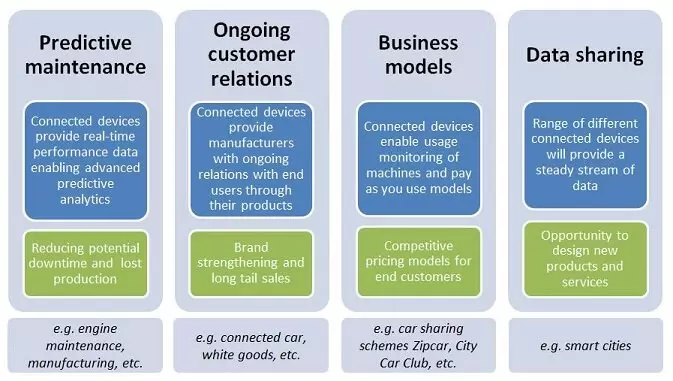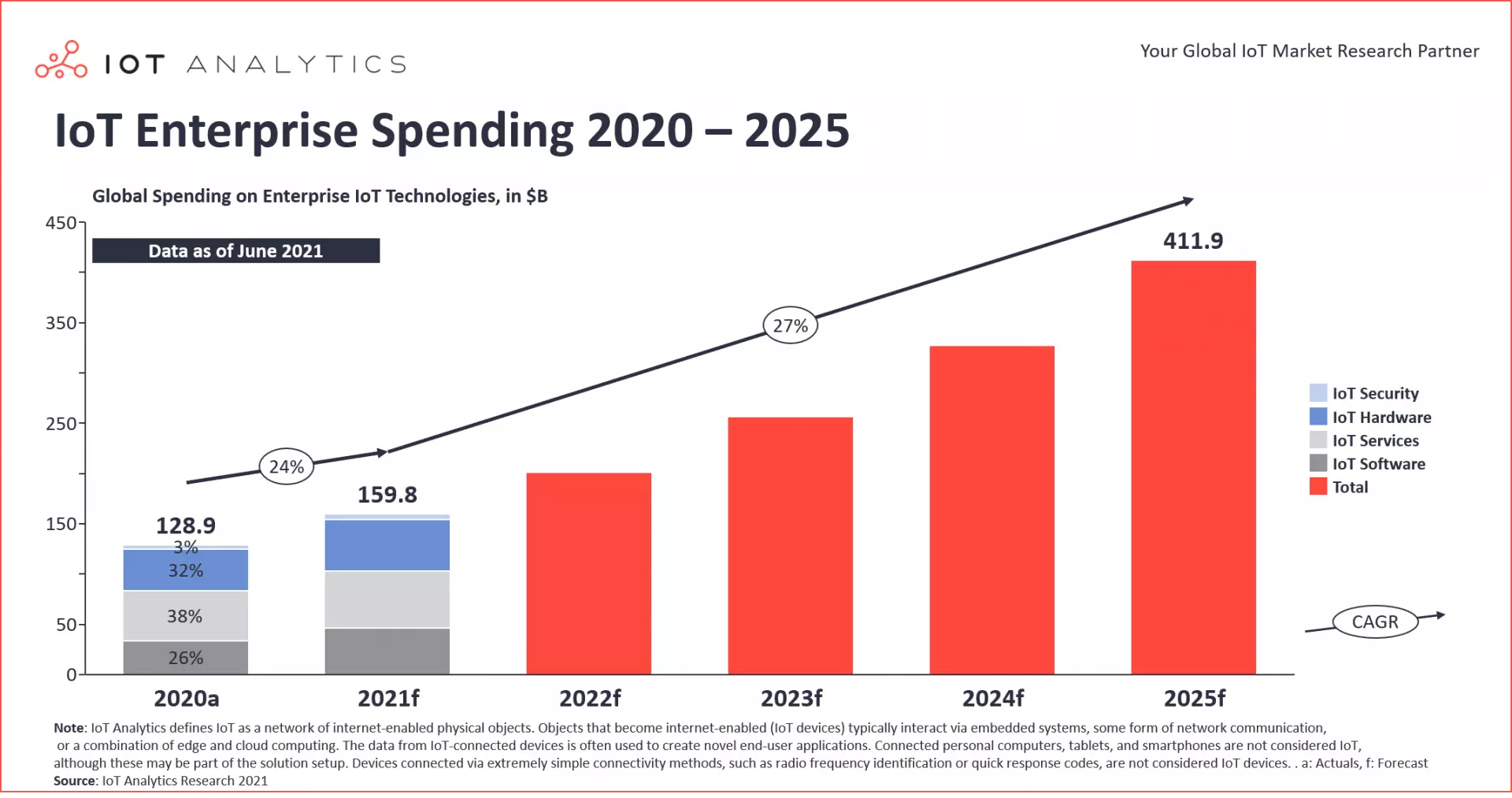Comments
- No comments found

Enterprise of Things (EoT) brings unprecedented flows of data, presenting performance, operational and management opportunities.
The Enterprise of Things is essentially the use of IoT to gather data, analyze it, and act on it for enhancing enterprise operations. IoT network and devices can be used not only to support peripheral parts of business processes, but can entirely replace the existing core systems to provide end-to-end connectivity and achieve operational excellence. Becoming aware of and deeply understanding the Enterprise of Things will enable business leaders to recognize how this model of implementing IoT can fit into their organizations.

The Internet of Things is already being used extensively in certain industries, such as manufacturing, which has led to the birth and popularization of the concepts like Industrial IoT or IIoT. IIoT is a network of machines equipped with sensors, smart controllers, and actuators that function with nearly complete autonomy, thanks to the technology. However, businesses are beginning to realize that the real power of IoT lies in its data and not in the technology itself. This realization has led organizations to explore the applications of IoT in ways that can leverage the wealth of data that is generated by IoT across the operations of the enterprise. This has led to the emergence of the Enterprise of Things, which, unlike IIoT which mainly acts as an enabler of production or just value creation, essentially acts as an integrated platform for the end-to-end flow of information throughout business processes, and helps value delivery in addition to value creation. It is important to understand that Enterprise of Things is not a technology in itself, but a reference to businesses that have adopted IoT at the enterprise level.

Most businesses, especially large corporations, are already primed for the shift towards EoT. Nearly all major corporations use management information systems (MIS) and enterprise resource planning (ERP) applications to manage and leverage information to guide business planning and decision-making. They also have automated major portions of their operations using smarter machines. However, the flow of information is not as seamless and the quality of data gathered is not as good as businesses desire. EoT, which is an organization that uses IoT to bridge the gap between the information technology and the operational capabilities of enterprises, not only ensures that more relevant data is gathered but also that the data is used to act immediately. This quicker responsiveness enables enterprises to stay agile in an evolving business environment, without compromising operational performance. For instance, introducing IoT in a manufacturing organization can help the manufacturer gather real-time, detailed, and structured data on not only their operations but also their finances and employees. The IoT network can relay this information to the Management information systems, which can enable faster and more effective decision-making both in the short and the long run. The increasing recognition of the business value of IoT combined with increasingly cheaper sensors will lead to the rapid spread of smart networks. Enterprise of things will become the standard organizational model in every industry. This means that understanding the Enterprise of things, and learning how to adopt it is no longer an option, but a necessity for long-term sustainability.
Naveen is the Founder and CEO of Allerin, a software solutions provider that delivers innovative and agile solutions that enable to automate, inspire and impress. He is a seasoned professional with more than 20 years of experience, with extensive experience in customizing open source products for cost optimizations of large scale IT deployment. He is currently working on Internet of Things solutions with Big Data Analytics. Naveen completed his programming qualifications in various Indian institutes.
Leave your comments
Post comment as a guest